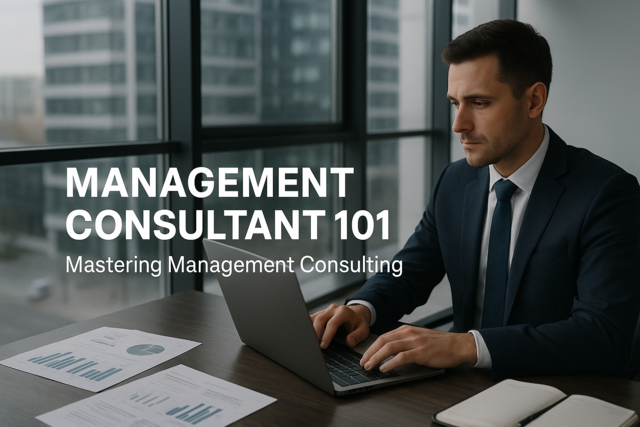You are almost to the finish line! However, there is an important step left. Although the actual writing of a policy and procedure manual is best left in the hands of one person for consistency's sake, top members of your organization should review your work.
Every organization that develops policies and procedures needs a review process. Many groups and companies find it efficient to form committees just for this purpose.
Your review committee can be the organization's board of directors, trustees, officers, managers, or a select group that represents all of these entities. If you have not already done so, ask a representative from your Information Technology (IT) team to be on the review team. Since some of your newer policies may involve technology, this person could offer valuable insights.
The purpose of the review committee is to read and offer feedback on all aspects of the manual before it is finalized, printed, and distributed to employees.
As the primary writer of the manual, it is important to give this committee a few guidelines on what you are looking for in the way of feedback. Otherwise, you may get much more than you bargained for!
To direct their thinking, you may need to begin by clearing up any misunderstandings they may have about the manual. For instance, you can let them know that the policy and procedure manual is not a safety manual, so it does not include all of your company's safety guidelines.
The manual also is not the place for your company's job descriptions. It also is not a how-to manual, offering lengthy of instructions on how employees should perform their jobs.
Let the committee know that the purpose of the manual to provide employees with work rules and procedures. If your company has a safety program, for instance, it should be available in a separate document. In your manual, you can reference that document as well other helpful resources and where to find them.
Next, give the review team a firm deadline by which you need feedback. That way, you will not be left hanging while you wait for their replies.
Here is a sample cover letter:
Dear XYZ board member:
After weeks of research, writing, and review, we have completed a draft of our new XYZ Policy and Procedures Manual. The manual will be distributed to all employees at the upcoming annual meeting, and to new employees at their orientation sessions. We also will have PDF versions available.
We want the manual to be comprehensive, yet easy to read and to understand. We see this as a living document, and we will be making revisions, when needed, to keep it up-to-date.
In order for the manual to be as effective and as accurate as possible, we are looking for constructive feedback from board members. Please read it and offer your comments by way or the attached comment sheet. In order for us to have the manual ready for the October annual meeting, we need your comments to us by Aug. 31.
Thank you for your support.
Sincerely,
Your name and names of others on the manual team
Your contact information
To make things easier for the reviewers, you might direct them to four different ways of giving feedback:
1. The draft is fine with no changes needed and no further comments.
2. The draft is fine with a few minor changes requested.
3. The draft needs significant changes.
4. No opinion.
Hopefully, your committee members will not take option #4, since you need constructive feedback. However, it might be an option for someone who is swamped with work and does not have the time to devote to reviewing the manual.
Another way of soliciting feedback on the manual is to ask your reviewers specific questions about the content. These questions could include:
-
Do you have the resources to both implement and monitor the policies that affect your department?
-
Would you or your staff need any training to carry out your responsibilities as outlined in the manual?
-
Is the manual's content and wording clear and unbiased?
-
Do you see any problems or concerns that the policies and procedures could cause?
Employee review
You also could involve a team of employees in the review process. Ask your managers to select a group of workers that they feel could offer the best insight. Here are a few questions to ask the employee review panel:
-
Do you understand your responsibilities, as outlined in the manual?
-
Do you find the wording to be clear and unbiased?
-
Would you need any additional training or information in order to carry out your responsibilities, as outlined in the manual?
-
Do you have any problems or concerns with any of the policies and procedures?
Legal review
As we detailed in Lessons 4 and 5, it is important that you have your attorney review your manual early on in the process.
It is a good idea to send a review copy to your attorney as part of this final review process. Your attorney should make sure that your manual complies with local, state, and federal employment standards. If unions represent your employees, your attorney will ensure your manual is consistent with any collective bargaining agreements. Other areas of the manual that have legal implications are those regarding employee benefits, IRS regulations, federal banking laws, equal opportunity, harassment, discrimination, employee privacy, and accessibility.
Hire an attorney who specializes in employment law to review and comment on your policies and procedures before they are finalized in the manual.
You may be wondering how much time you should give your reviewers to consider the manual. Two weeks is a standard period for most review processes. You may need to extend the deadline under certain circumstances, so be sure to allow some wiggle room with your dates.
If this is the first time your organization has had a policy and procedure manual, you might want to schedule a meeting with your review team. The purpose of this meeting would be to discuss and answer any concerns review team members have with the manual.
Since many of your review team members may have the same questions, a face-to-face meeting may save time in the long run.
Receiving constructive criticism
Whether you get your feedback in written form, or during an in-person encounter, it may be a bit overwhelming. You have spent weeks, maybe months, on this project. You have done the research and the interviews, and you have spent the time reading through similar manuals.
How can you keep your cool when your colleagues offer their two cents? How can you avoid feeling as if you are facing a firing squad?
It is natural to feel a little defensive when you receive criticism. However, the important thing to keep in mind is that you have done your homework on this project. Also, this review process is a safeguard for you, as well as for the entire organization.
Here are some tips for handling constructive criticism from your managers, or from your peers, with grace:
1. Listen more than you talk. Your goal has been, and still is, to create an informative, comprehensive manual that reflects the goals of your organization.
If you find yourself on the defensive, take a deep breath and just listen. You don't need to comment on everything being said. If feel like jumping in and interrupting the speaker, try taking a few notes instead.
By taking this time to pause before you react, you give yourself time to formulate a calm response, if one is needed. By waiting a bit, you may find that a discussion happens that answers the comments as well, or better, than you could.
2. Follow up with questions for clarity. After you have allowed a reviewer to share his or her thoughts fully, without interruption, it is time to make sure you understand what the issue is. Reflective listening involves repeating back what you have heard. For example, you could ask, "I hear you saying that you think Policies 3 and 4 should be combined into one policy. Is that correct?"
At this point, you are not analyzing the person's suggestion, only focusing on understanding it. As part of this step, it helps to recognize that the person giving you that feedback may be nervous, and may not have expressed his or her ideas clearly.
3. Accept the comment. Depending on what the person has said, and how you feel about it, this can be the hard part. Accepting the comment does not necessarily mean that you agree with it. It is merely a way of acknowledging the other person's time and effort. You could say, "Yes, thank you for bringing that point up," or "Yes, we often had to look at whether polices should be combined or separated."
Looking the person in the eye as you say these comments makes your words more meaningful and personal.
5. Address the feedback. After you have listened, asked reflective questions and accepted the feedback, now it is time to address any concerns. In the case of the above example, you might say something like, "our goal throughout the process of developing the manual was to make it as simple and concise as possible. Even though they are related, we felt that Policies 3 and 4 deal with separate issues. That is why we listed them as two different policies."
6. Request time to follow up. Hopefully, you can agree on the how to proceed with any concerns that come up during the meeting. However, there may some issues raised that will require some more time. If this is the case, let the other person know that you will do some more research and get back to them as soon as possible.
If it is a large topic of concern, such as the overall tone of the manual or legal concerns, you may wish to schedule a follow-up meeting with the entire review committee, or with certain members. Before this important meeting, take the time to make sure you have addressed each concern.
Here is a checklist you may want to give your review committee:
Please keep the following factors in mind as you review the draft of the new XYZ manual:
-
Is each policy consistent with our company by-laws?
-
Do the policies and procedures reflect our organization's mission, goals, and values?
-
Is the need for the policy, its intentions, when it is in effect, and who it affects stated clearly?
-
Is each policy based on fact, not opinion?
-
Is the wording of the manual fair and free from bias?
-
Does the manual provide a general guide that will aid in decision-making?
-
Are the procedures clear and easy to follow?
-
Can you think of anything that is left out?
-
Do you feel the manual can be easily updated?
After your review process is complete and your committee is satisfied with the document, ask them to sign and date a letter or the form you initially sent out. Keep these signatures as a record of the committee's approval.
Getting feedback, both positive and negative, is an important part of developing an effective policy and procedure manual. While the process of doing further revisions of the manual may seem overwhelming at first, keep in mind that the end product will be worth it.
An effective policies and procedures manual will provide a strong foundation for your organization. Not only will the manual be helpful to new employees, but a firm set of policies will aid in the transitions to new board members.
With the manual in place, new members will be able to focus more time on their goals for their terms of office.



























